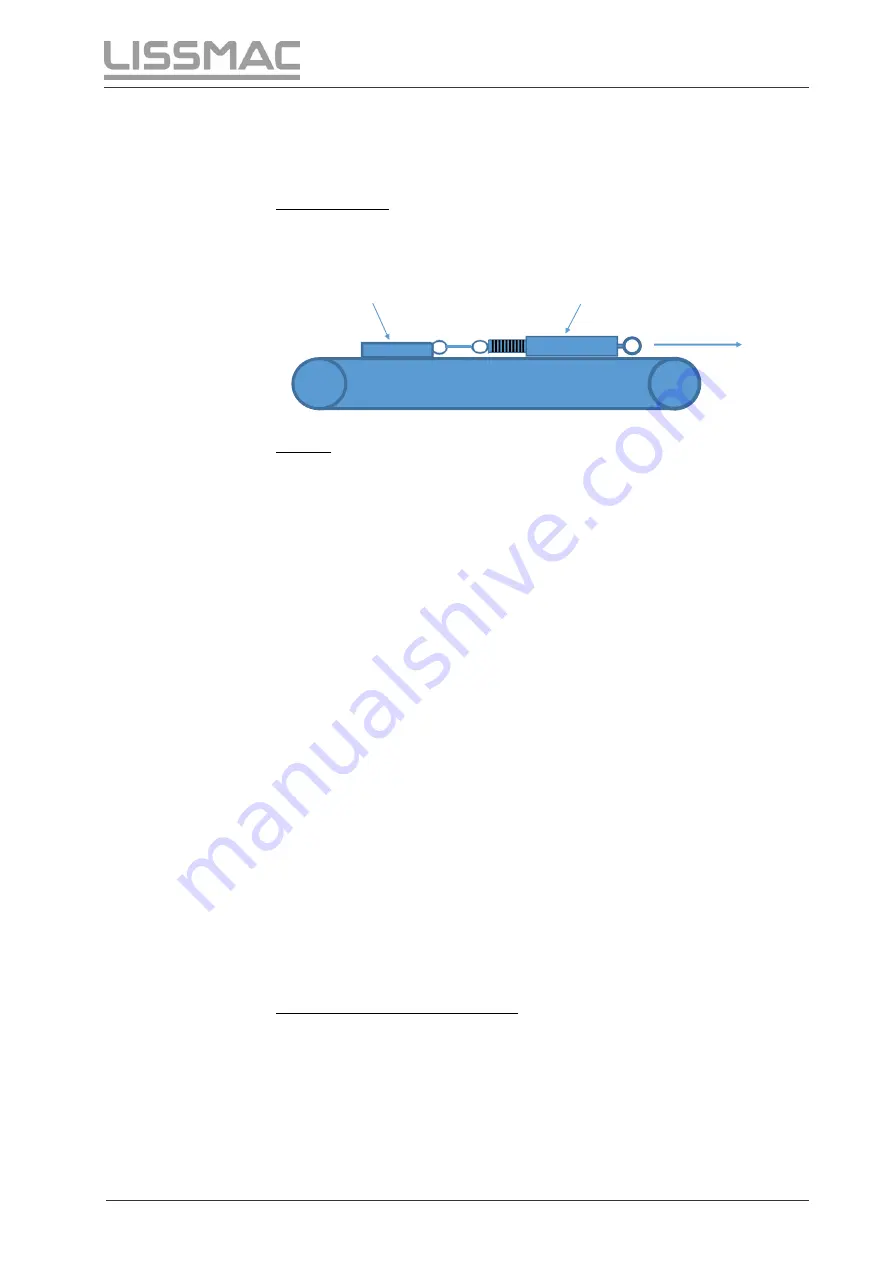
Operation
52
Grinding machine SMD 123 RE
6.4
Checking traction/adhesion of conveyor belt
The conveyor belt can be checked for grip / adhesion using the following methodology.
Required equipment:
Flaat steel 80mm x 70mm x 8mm with drawbar
Zugwaage/Kraftmesser 0-50N bzw. 0-5kg
Test specimen flaat steel 80mmx70mmx8mm Weighbridge 0-50N / 0-5kg
Methodic:
Cleaning conveyor belt if necessary
Placing the flaat steel on the clean conveyor
Hooking in the force gauge and pulling slowly in horizontally direction
With new conveyor belt you should achieve min. 40N or 4 kg before flaat steel begins to slide.
With used conveyor belts you should achieve min. 25N or 2,5 kg
6.5
Correct adjustment of aggregates
Adjust R-aggregate always by doing the „scratchtest“. The grinding belt must be touching the
workpiece but must be able to turn by hand. The pressure or rather the depth must be adjusted by
turning the bruss nut. For doing the scratchtest the R- aggrgate must be activated so that the R-
aggrgate comes down from parking position into working position.
Indications of to much grinding pressure:
The ammeter reaches the red range. The workpiece
will get hot, in worst case it will burn into the conveyor belt.
Remedy
: reduce grinding pressure, reduce cutting speed (m/s), raise up feeding speed (m/min).
Workpieces are hurled around by the E-aggrgate.
The following measures are to be taken:
The conveyor belt must be cleaned. (wether by using the cleaner or by the E-aggregate itselfs like
descripted in capture 3„raising traction of conveyor belt“). Reduce the depth of the E-aggregate by
cranking up with the crank handle until the workpiece will not hurled around anymore. If now the
edgerounding is too less, the only way is to slow down feeding speed. But there are physically
limits anyway. Hereby it could be possible that some workpiece cannot be processed safe.
Some characteristics for impossible process:
Bended parts
Parts are oily or covered with grease
Parts have big thickness compared to surface area. Looks more like a cube than a plate.
Parts have burr on both sides so they con not lay flat on the conveyor belt.
F





























